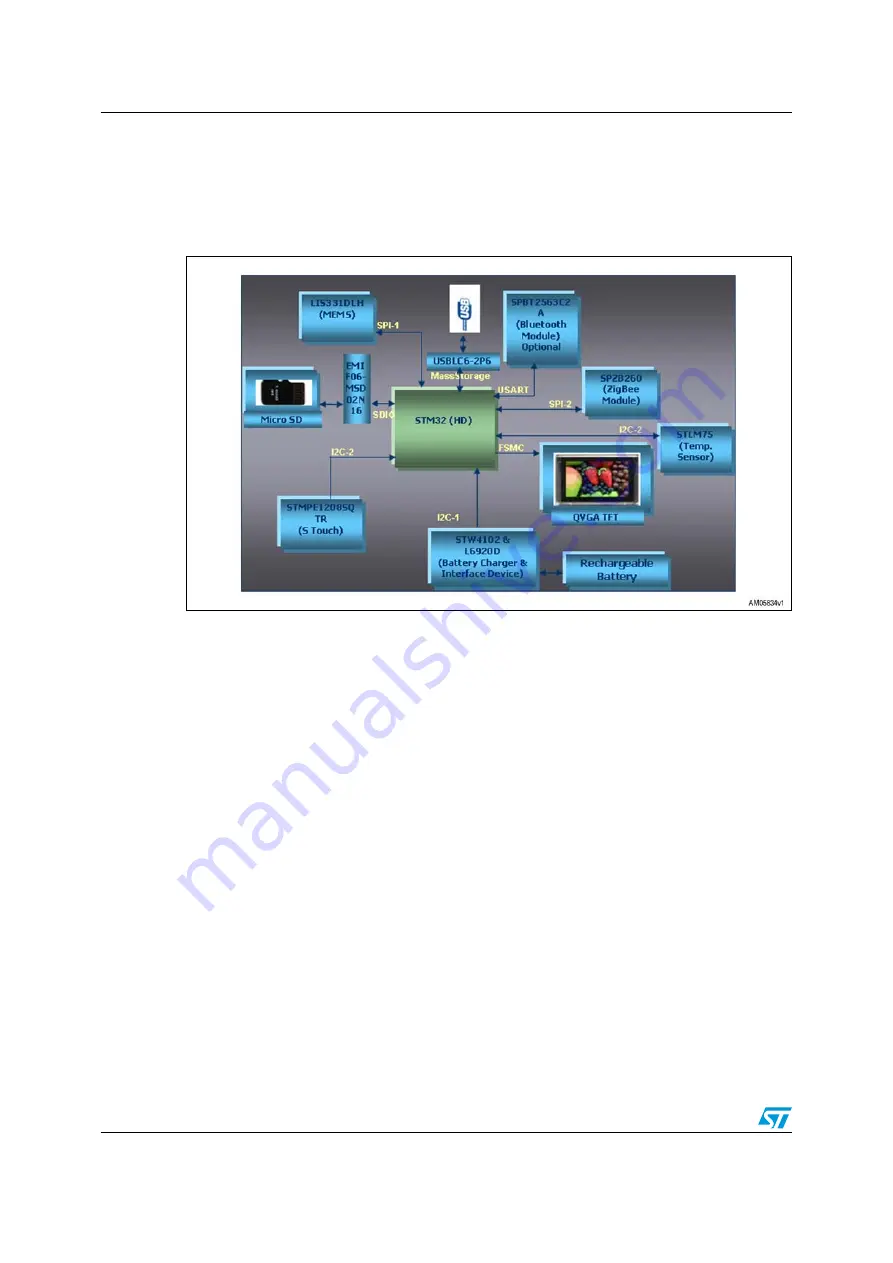
System overview
UM0874
14/33
Doc ID 16844 Rev 1
4 System
overview
4.1
Hardware design description
Figure 16.
System block diagram
The hardware block diagram is given in
. As shown, the STM32 microcontroller is
the main controller of the system.
4.1.1 Microcontroller
(STM32)
The STM32 is a 32-bit MCU based on the popular ARM 32-bit Cortex™-M3 CPU running at
72 MHz with performance of 90 DMIPS with 1.25 DMIPS/MHz. The memories embedded in
it contain up to 20 Kbytes of SRAM and 128 Kbytes of flash memory. The microcontroller
has single-cycle multiplication and hardware division. It has 80 fast general-purpose IOs to
enhance the overall performance. The IOs are 5 V tolerant.
The microcontroller has up to 9 communication interfaces which include two I
2
Cs
(400 kHz), three USARTs (4.5 Mbps), two SPIs (18 MHz), CAN 2.0B active interface and
USB 2.0 (12 Mbps) full-speed interface. For more details, please refer to the STM32F103VE
datasheet.
For the digital photo frame application, the firmware is using the two SPIs, two I
2
Cs, SDIO,
FSMC and USB interfaces. One of the SPIs is interfaced with MEMS and the other one with
the ZigBee
®
module. The SD card is interfaced with SDIO and the TFT with FSMC. The
STLM75 and STMPE1208SQTR use I
2
C-2 and the STW4102 uses I
2
C-1 to communicate
with the controller.
The microcontroller works on a single voltage from 2 V to 3.6 V, unlike several
microcontrollers requiring dual voltage. In this application the voltage bus is managed with
3.3 V.
www.BDTIC.com/ST















































